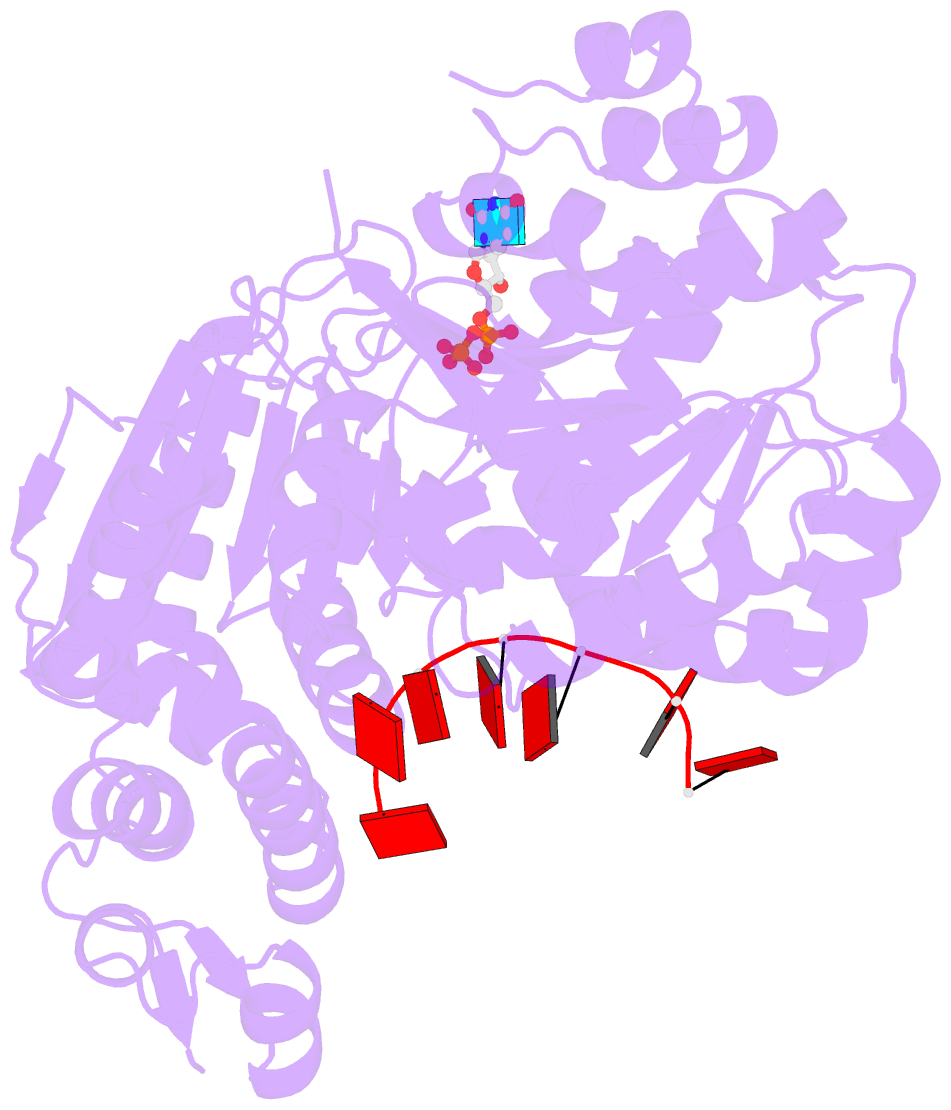Summary information and primary citation
- PDB-id
- 4tz6; SNAP-derived features in text and JSON formats;
DNAproDB
- Class
- RNA binding protein-RNA
- Method
- X-ray (3.209 Å)
- Summary
- Dead-box helicase mss116 bound to ssrna and udp-bef
- Reference
- Mallam AL, Sidote DJ, Lambowitz AM (2014): "Molecular insights into RNA and DNA helicase evolution from the determinants of specificity for a DEAD-box RNA helicase." Elife, 3, e04630. doi: 10.7554/eLife.04630.
- Abstract
- How different helicase families with a conserved catalytic 'helicase core' evolved to function on varied RNA and DNA substrates by diverse mechanisms remains unclear. In this study, we used Mss116, a yeast DEAD-box protein that utilizes ATP to locally unwind dsRNA, to investigate helicase specificity and mechanism. Our results define the molecular basis for the substrate specificity of a DEAD-box protein. Additionally, they show that Mss116 has ambiguous substrate-binding properties and interacts with all four NTPs and both RNA and DNA. The efficiency of unwinding correlates with the stability of the 'closed-state' helicase core, a complex with nucleotide and nucleic acid that forms as duplexes are unwound. Crystal structures reveal that core stability is modulated by family-specific interactions that favor certain substrates. This suggests how present-day helicases diversified from an ancestral core with broad specificity by retaining core closure as a common catalytic mechanism while optimizing substrate-binding interactions for different cellular functions.





